 |
 |
 |
| |
Cognitive Impairment among HIV-Infected Men with Longitudinal Follow-ups
|
| |
| |
Serostatus was not associated with cognitive impairment in MACS. Pdf attached
Download the PDF here
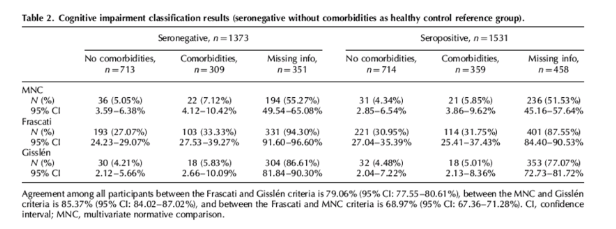
CROI 2020
Zheng Wang1, Yu Cheng1, Eric C. Seaberg2and James T. Becker1,for the Neuropsychology Working Group of the Multicenter AIDS Cohort Study
Abstract
To control false discovery rate (FDR) in identifying cognitive impairment among individuals infected with HIV, the multivariate normative comparisons (MNC) method has been used to account for intercorrelations among cognitive domains. However, the existing MNC is for cross-sectional data and does not account for the intercorrelations among repeated visits. That is, the best predictor of future test performance is current test performance. This work developed a novel longitudinal MNC (LMNC) to classify cognitive status for individuals with multiple visits, yielding more accurate results than naïvely applying the cross-sectional MNC to each visit.
Data used in this work were collected before April 2017 among MSM from the Neuropsychological (NP) Substudy of the Multicenter AIDS Cohort Study. Six cognitive domains were evaluated bi-/semi-annually among these men: learning, memory, executive functioning, working memory & attention, motor speed & coordination, and speed of information processing. The final analysis included data from 22,900 visits by 3,701 men (mean age 34.9, 55.0% HIV+, mean 6.2 visits, mean follow-up 8.3 yrs) with complete data from all 6 domains. T-scores, at every domain, were adjusted for race, age, education and number of tests. HIV- men without comorbidities (n=922) were treated as healthy controls, and the LMNC was used to classify cognitive impairment among HIV- and HIV+ men. Also, the cross-sectional MNC was applied to each visit with and without Benjamini-Hochberg (BH) corrections.
Among healthy controls the LMNC identified 5.5% with cognitive impairment. This suggests that the LMNC guarded FDR at the pre-determined 5% level. With the cross-sectional MNC applied with and without the BH correction, impairment rates were 19.8% and 9.5% in the healthy controls, respectively. In the HIV+ group, 7.3% men were identified as impaired with the LMNC, compared with 16.4% and 29.5% using the MNC method (with and without the BH correction). In the HIV- group, the rates are 9.3%, 11.7% and 24.1%, respectively. The rates of impairment and mean T-scores across visits did not differ between the HIV- and HIV+ men.
This newly developed LMNC successfully controlled the FDR at the pre-specified level across study visits. This means that the estimates of impairment over repeated testing is more accurate than simply applying cross-sectional criteria multiple times.
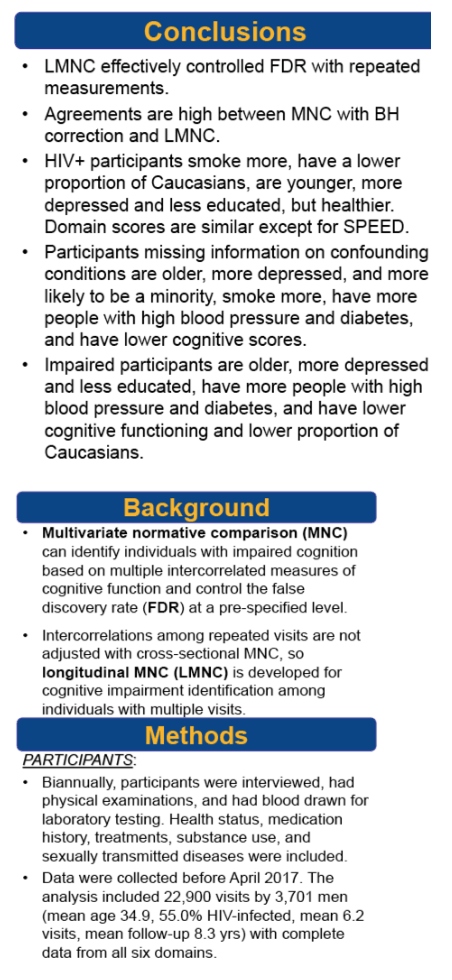
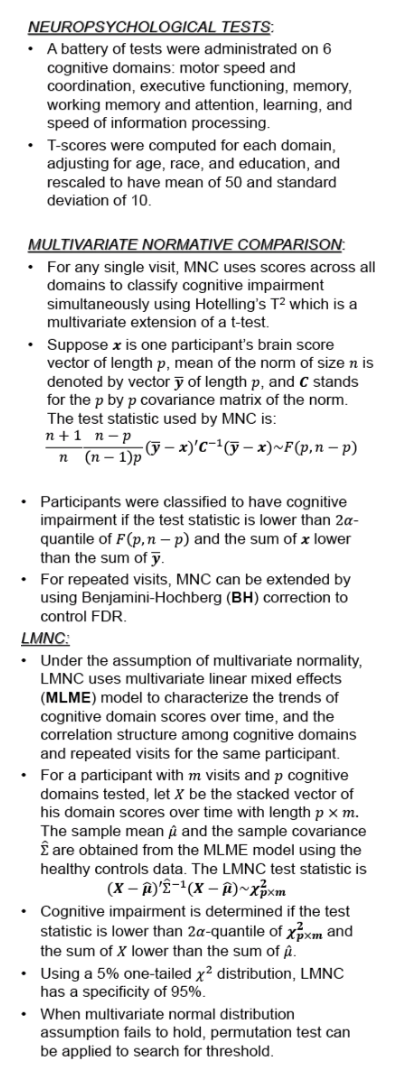
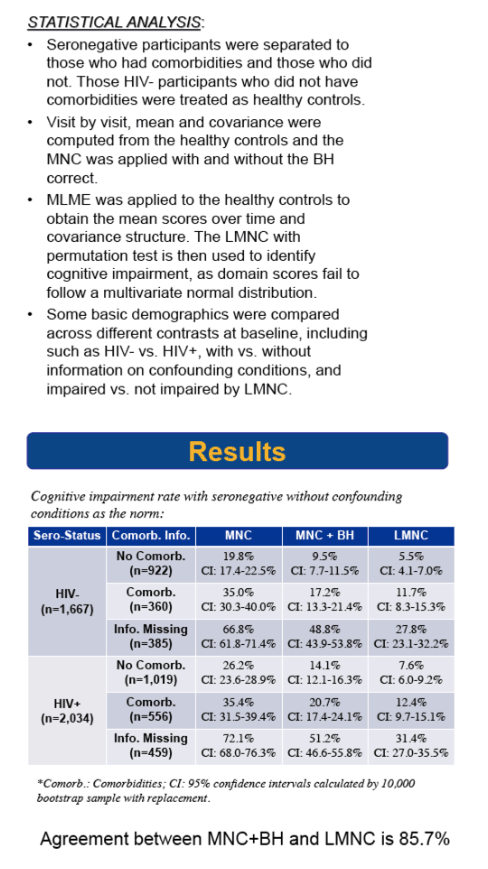
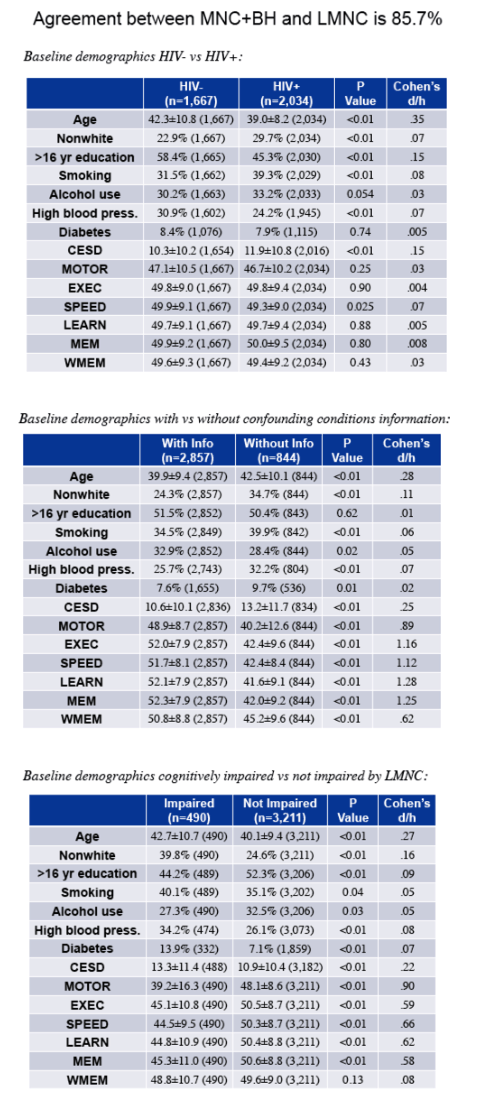
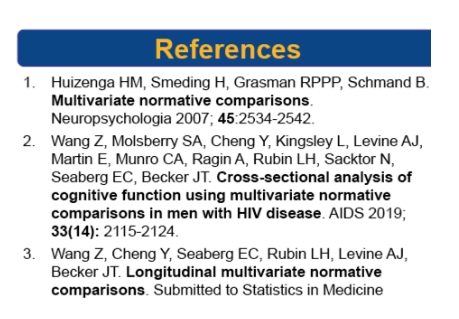
|
| |
|
 |
 |
|
|